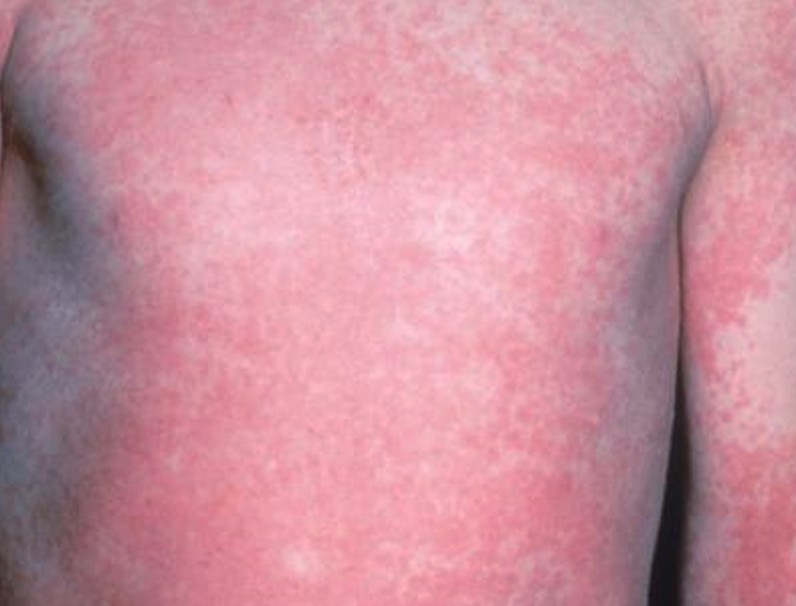What is Scarlet Fever?
Scarlet fever is characterized by the development of a fever and the rashes that are scarlet-colored. Scarlet fever is more common in the young who are under 10 years old. Patients who developed strep infections are prone to this condition. This state is sometimes compared with scarlatina, a fever-causing condition that presents a less form of scarlet fever.
Scarlet fever has been noted historically as a deadly condition and was feared most in the early times. As of today, the severity of the disease has been controlled. Morbidity cases and mortality cases are somehow much lower today. Severe complications are much rare in incidence in day’s time. According to statistical reports, men and women are equally affected. The peak incidence of this condition is said to be children aged 4 to 8 years old.
Scarlet Fever Symptoms
Scarlet fever has a 1 to a 4-day incubation period that may emerge in an abrupt manner. These symptoms include:
- Sore throat
- Headache
- Nausea
- Nausea and vomiting
- Abdominal pain
- Myalgias
- Body malaise
- White strawberry tongue
- Circumoral pallor
- Loss of appetite
- Swollen lymph nodes (neck glands)
The rashes appear 12 to 48 hours after the onset of fever. These rashes are described as red blotches that appear to be sunburn-like. Once treatment is not attained immediately, the fever shall peak up to 103 to 104 °F and shall gradually return within the normal range in 5 to 7 days. The rashes shall appear to be:
- Properly distributed to the trunk and extremities
- May develop to macules (boils)
- Sandpaper-like texture
- Formation of petechiaes that may persist for days
If a person is suspected of scarlet fever, the doctor would usually order for a throat swab that can confirm the presence of the disease-causing bacteria. Throat culture test is also done in differentiating the bacteria. A positive throat culture for group A strep indicates scarlet fever along with the presenting symptoms from a physical examination, which helps in diagnosing the condition.
Possible complications include:
- Rheumatic fever
- Arthritis
- Ear infection
- Kidney damage
- Liver damage
- Meningitis
- Pneumonia
- Sinusitis
One should consult the doctor as these symptoms develop. When proper treatment was given and the patient seems not to react or respond from the therapy, asking for the doctor’s opinion is best.
Scarlet Fever Causes
Scarlet fever is primarily caused by group A beta-hemolytic streptococci. This is a disease-causing toxin which can also result to other conditions such as strep throat and impetigo. It makes the person prone to developing this condition when he or she has been exposed to these bacteria.
Those who are at risk for this condition are the young, 5 to 15 years old. Having close contact with persons affected can make one prone of acquiring the condition.
Scarlet Fever Treatment
Prevention is a good way to start in treating scarlet fever. The most important and vital thing a person should do in order to avoid acquiring scarlet fever is to avoid people who have them. Know that the causative agent shall be transmitted through droplets and direct contact.
The proposed treatment for this condition is providing antibiotics in order to kill the bacteria responsible. This is given as a 10-day treatment course. Oral penicillin is still widely used, especially in the UK. If one is allergic with penicillin, erythromycin is given. The patients can stay at home and get the treatment accordingly.
Other assistive treatment includes increasing oral fluid intake. Keeping the patient in a cool environment can promote comfort. Giving of over-the-counter analgesics is not restricted. Antipyretic drugs are provided too to reduce the discomfort and temperature of the client. Applying calamine lotion on the skin can reduce the itchiness felt over the rashes.
Is Scarlet Fever Contagious?
This condition is said to be highly contagious and can be transmitted through breathing in the causative agent. Scarlet fever can be transmitted through droplet form. The mere sneezing of an affected person can be contagious. Transmission through touching can be a possibility, along with the touching of objects which an infected person has made contact with. A person is said to be contagious if he or she has not received any antibiotic treatment for at least 24 hours.
Isolation is truly essential when a patient is found to have this condition. The affected child should not go to school to avoid transmission. The patient’s disposals such as used handkerchiefs or tissues should be washed or disposed of properly. Hand washing is very essential to prevent cross contamination. Washing of hands is also important when a person has accidentally made contact with an infected person. The patient’s used utensils should not be shared with another person. The child or person should be taught how to properly cough and sneeze. One should be responsible in handling oneself and avoiding the possibility of contaminating others.
Scarlet Fever Pictures
Photos, Images and Pictures of Scarlet Fever…









Hello, my name is Sarah Morgan and my brother has got scarlet fever rash all I want to know is how do you get rid of it??
from Sarah x
he needs antibiotic and calamine lotion for the rash